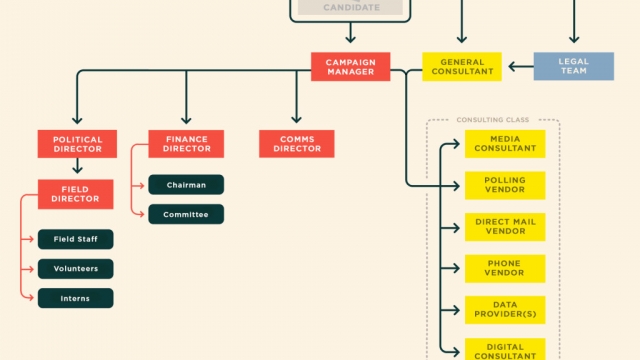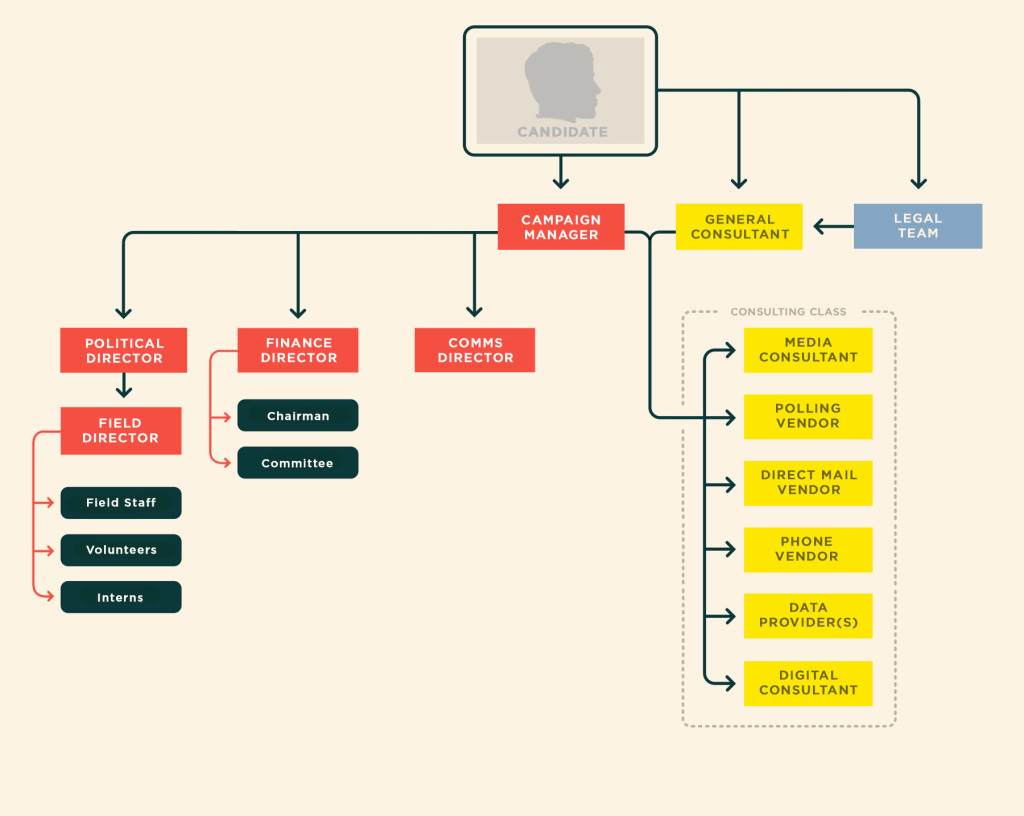Blog
The Lean Campaign Model

March 31, 2015
The essay below is by Austin James at Pixels & Politics. View the entire piece here.
The Existing Campaign Paradigm
For those familiar with the political campaign process, you know that they are largely run the same way they were 100 years ago. For some things, like bolt-action rifles, secret family recipes and PBS programming that’s okay, but not for deciding our country’s political leadership. Our approach to voter contact and campaign strategy should reflect the habits of the very people we are trying to reach. So, for the last few years I’ve been rethinking the optimal campaign structure, one more conducive to the idea of a political startup, with its unique focus on technology, rapid analysis and response. Traditionally, campaign management starts with a senior consultant (often called a general consultant, or GC) and a campaign manager, with the former setting the tone of the campaign and focusing on strategy, while the latter executes that vision. But outside these positions, structure can vary widely based on need and resources. Since much has already been written about the various positions on a campaign I won’t go into too much detail about each one in this post. So if you need a primer, Wikipedia always offers a good start. In addition, Harvard Law School has a quick guide to working on a campaign. As one would imagine, a billion dollar enterprise for President of the United States is structurally much more complex than running for Cuyahoga County Executive in Ohio. So, in an attempt to make the broadest case possible, I’ll be largely generalizing, using my extensive experience with congressional races as a basis for the optimal campaign structure. Like most organizations, campaigns will come in all sizes, but this is typically what you can expect an org chart to look like:  As you can see from the diagram (and I can assure you from experience), key campaign faculties often exist in silos. Rarely is data shared or referenced laterally across departments and the consulting class typically exists in near autonomy of campaign staff. Volunteer coordinators know little about how their actions affect campaign messaging, the direct mail vendors rarely talk with anyone in the digital team to test creative, and so on.1 Click here to read the entire piece.
As you can see from the diagram (and I can assure you from experience), key campaign faculties often exist in silos. Rarely is data shared or referenced laterally across departments and the consulting class typically exists in near autonomy of campaign staff. Volunteer coordinators know little about how their actions affect campaign messaging, the direct mail vendors rarely talk with anyone in the digital team to test creative, and so on.1 Click here to read the entire piece.
